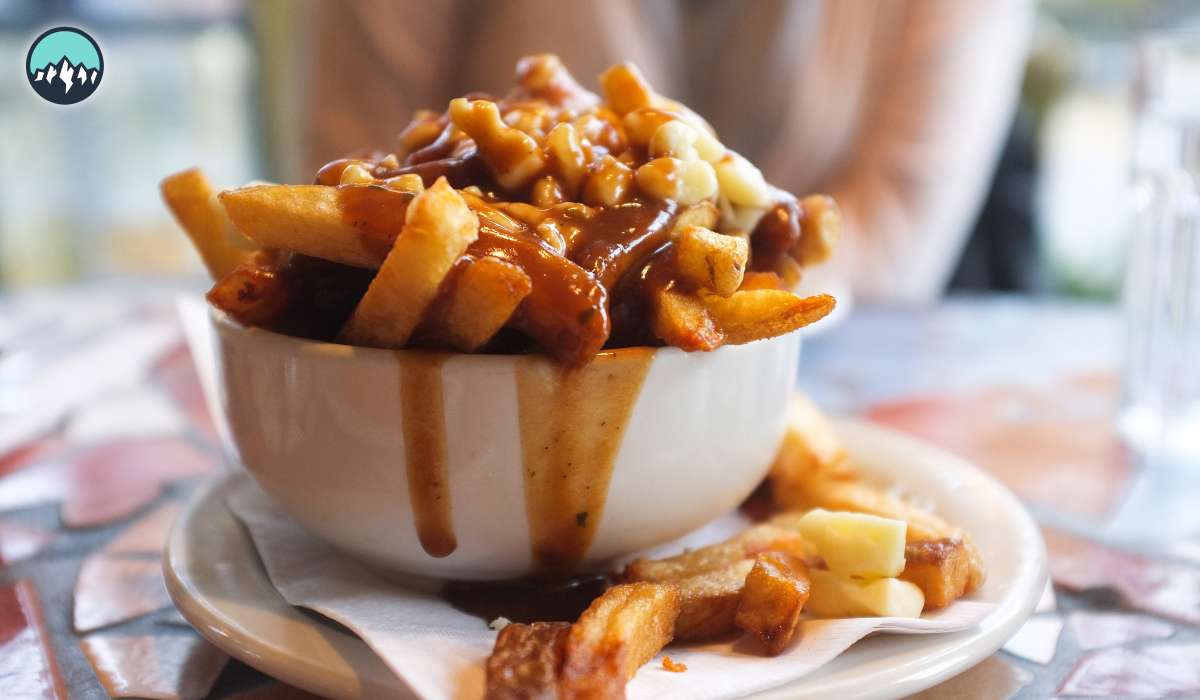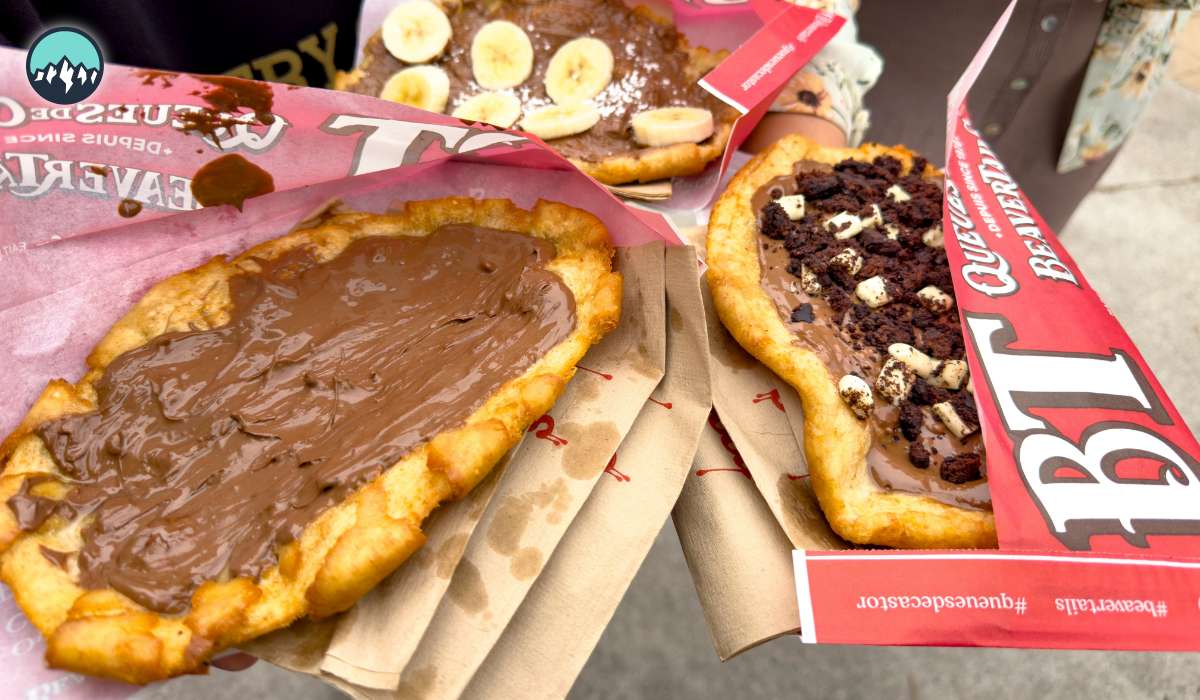9 Canadian Foods Every Newcomer Should Try
10 Apr 2025

Canada is a land of vast landscapes, cultural diversity, and incredible cuisine. Whether you're planning to visit Canada for a short trip or are a newcomer to Canada beginning a new life, one of the most exciting ways to connect with the country is through its food. Canadian foods reflect a unique blend of Indigenous traditions, French and British influences, and a mosaic of global cuisines brought by immigrants over centuries. For those who live in Canada - or are settling in - experiencing these signature dishes is a delicious introduction to Canadian culture. Below are nine must-try foods in Canada that represent the country’s identity, history, and heart.
Food in Canada

Food in Canada is a beautiful reflection of the country's multicultural population, regional diversity, and deep-rooted Indigenous traditions. The Canadian culinary landscape is shaped by its geography - from the seafood-rich coasts of the Atlantic and Pacific, to the hearty harvests of the Prairies, to the sugar maples and rich dairy culture of Quebec and Ontario. While many associate Canadian cuisine with comfort foods like poutine and maple syrup, there's so much more beneath the surface.
Each province and territory boasts its own culinary identity. In the Maritimes, you’ll find seafood chowders and lobster rolls. In British Columbia, Asian fusion and sustainable dining thrive. Ontario is home to a blend of immigrant kitchens, while Quebec has preserved its rich French culinary roots through dishes like tourtière and cretons. Crucially, Indigenous foods and traditions play a central role in the country’s food history. Ingredients like bannock, wild game, berries, and foraged plants tell stories of survival, stewardship, and community. For newcomers to Canada, food is more than just nourishment - it's a meaningful gateway to understanding the country’s values, history, and people. Whether you’re sampling a butter tart at a farmers’ market or enjoying fresh bannock at a community event, every bite brings you closer to what it means to live in Canada.
9 Canadian Foods Every Newcomer Should Try

Canada’s vibrant culture is as much a feast for the palate as it is for the soul. For newcomers, exploring the country’s culinary landscape offers more than just a taste of local flavors—it’s a journey through centuries of history, resilience, and multicultural harmony. From Indigenous traditions that honor the land to French and British legacies, and the global influences brought by generations of immigrants, Canadian cuisine tells a story of connection and creativity. Each dish, whether a humble street food or a holiday centerpiece, serves as a delicious invitation to understand the people, places, and values that define this vast nation. Here are nine iconic foods that every newcomer should savor, each offering a unique bite of Canada’s heart and heritage.
Poutine: The Quintessential Comfort Food
Originating in rural Quebec in the 1950s, poutine has evolved from a humble diner dish to Canada’s most iconic comfort food. At its core, it’s a harmonious trio of crispy French fries, fresh cheese curds (which must “squeak” when bitten), and a generous ladle of hot, savory gravy.The magic lies in the interplay of textures: the crunch of golden fries, the soft give of melted cheese, and the rich, umami depth of the gravy. While classic poutine remains a favorite, creative twists—like pulled pork, smoked meat, or even lobster toppings—have elevated it to gourmet status. For newcomers, indulging in poutine isn’t just a meal; it’s an initiation into Canadian culture, often enjoyed after a night out or during winter festivals.
Where to try it: Dive into iconic spots like Montreal’s La Banquise, Toronto’s Smoke’s Poutinerie, or cozy diners in small towns where locals swear by their “secret” gravy recipes.
Butter Tarts: A Sweet Canadian Classic
Butter tarts are a dessert deeply woven into Canada’s culinary DNA, with recipes passed down through generations. These miniature pies feature a buttery, flaky crust filled with a gooey, caramel-like mixture of sugar, butter, and eggs. The filling’s texture sparks passionate debate: some prefer it runny and syrupy, while others opt for a firmer, custard-like consistency. Raisins or pecans are common additions, though purists argue the classic should remain unadorned.Historically linked to early settlers’ thrifty pantry staples, butter tarts now star at summer fairs, holiday feasts, and roadside bakeries. Ontario’s Kawarthas Northumberland region even hosts an annual Butter Tart Tour, celebrating this sweet emblem of Canadian hospitality.
Where to try it: Family-run bakeries in rural Ontario, farmers’ markets, or festivals like the Midland Butter Tart Festival.
Tourtière: French-Canadian Savoury Pie
A centerpiece of Quebec’s Réveillon (Christmas Eve feast), tourtière is a fragrant meat pie that embodies the province’s French heritage. Traditionally made with minced pork, veal, or game, it’s seasoned with cloves, cinnamon, and allspice—spices that hint at Quebec’s historical ties to the fur trade and Indigenous ingredients. The filling is encased in a buttery, golden crust, often decorated with intricate lattice patterns.
Regional variations abound: coastal versions might include seafood, while Saguenay-Lac-Saint-Jean’s tourtière du Lac features cubed meats layered like a potpie. More than just food, it’s a symbol of family and celebration, often served with tangy ketchup or pickled beets.
Where to Try it: Quebec City’s Christmas markets, Montréal’s Au Pied de Cochon, or homemade by Quebecois grandmothers during the holidays.
Nanaimo Bars: A West Coast Delight
Named after the picturesque coastal city of Nanaimo, British Columbia, this no-bake dessert is a layered masterpiece of contrasts. The base combines graham crumbs, shredded coconut, and chopped nuts bound with cocoa and butter, creating a chewy, chocolatey foundation. The middle layer is a velvety custard buttercream, while the top is a glossy chocolate ganache.
Legend has it the recipe first appeared in a 1950s community cookbook, though its exact origins remain delightfully murky. Today, Nanaimo bars are a staple at potlucks, coffee breaks, and holiday cookie platters. Adventurous bakers even riff on the classic with matcha, peanut butter, or mint variations.
Where to Try it: Nanaimo’s annual Bathtub Weekend festival, Vancouver cafés, or grocery store bakeries nationwide.
Maple Syrup: Canada’s Liquid Gold
Canada produces over 70% of the world’s maple syrup, a testament to its deep-rooted connection to the sugar maple forests of Quebec and Ontario. The syrup’s journey from tree to table begins in early spring, when freezing nights and warm days trigger sap flow. Farmers tap the trees, collect the sap, and slowly boil it down to concentrate its sweetness. The result is a complex, amber-hued syrup with notes of vanilla and woodsmoke.Beyond pancakes, Canadians use it to glaze salmon, sweeten baked beans, or even craft maple-infused cocktails. Visiting a cabane à sucre (sugar shack) during sugaring-off season offers an immersive experience: think hearty feasts of pea soup, maple-glazed ham, and tire sur la neige (hot syrup poured onto snow to make candy).
Where to Try it: Quebec’s Sucrerie de la Montagne, Ontario’s Fulton’s Pancake House, or maple festivals in New Brunswick.
Ketchup Chips: A Uniquely Canadian Snack
A vivid red and boldly flavored snack, ketchup chips are a Canadian invention that’s become a cultural curiosity. Introduced in the 1970s by brands like Hostess and Old Dutch, they’re coated in a tangy, tomato-based seasoning that strikes a balance between sweet, salty, and vinegar-like zing.
While ketchup chips are now a supermarket staple, their popularity peaks during road trips, hockey games, and backyard barbecues. For newcomers, the bright red dust left on fingertips is a playful (and delicious) introduction to Canada’s quirky snack culture.
Where to Try it: Any convenience store—look for Lays, Miss Vickie’s, or President’s Choice brands.
BeaverTails: The Ultimate Canadian Treat
Inspired by the flat, paddle-shaped tail of Canada’s national animal, BeaverTails are a beloved fried-dough pastry. The dough is stretched by hand, fried until crispy, then topped with cinnamon sugar, chocolate hazelnut spread, or fruity toppings like lemon and raspberry.
Born in Ottawa’s ByWard Market in the 1970s, they became a sensation after being served to the Royal Family during a 1983 visit. Today, they’re synonymous with winter fun—pair one with a hot chocolate after skating on the Rideau Canal or skiing in Whistler. Seasonal flavors, like pumpkin spice or maple bacon, keep the tradition fresh.
Where to Try it: BeaverTails kiosks in Ottawa, Banff, or Quebec City’s Winter Carnival.
Montreal-Style Bagels: A Unique Twist on a Classic
Montreal’s bagels are a point of pride—and friendly rivalry with New York. Smaller, denser, and sweeter than their American cousins, they’re hand-rolled, boiled in honey-sweetened water, and baked in wood-fired ovens, yielding a crisp exterior and chewy interior. Topped with sesame or poppy seeds, they’re best enjoyed fresh from the oven, slathered with cream cheese or smoked salmon.
The recipe traces back to Eastern European Jewish immigrants in the early 20th century, and bakeries like Fairmount and St-Viateur still use century-old techniques. For food lovers, a midnight bagel run in Montreal’s Mile End neighborhood is a rite of passage.
Where to Try it: Fairmount Bagel (open 24/7), St-Viateur Bagel, or Montréal’s Jean-Talon Market.
Bannock: Indigenous Bread with Deep Roots
Bannock, a simple bread with Indigenous origins, tells a story of survival and adaptation. Originally made from flour traded during colonial times, it became a staple for many First Nations, Métis, and Inuit communities. Traditionally cooked over an open fire or fried in a pan, bannock can be savory (mixed with herbs or served with stew) or sweet (drizzled with honey or jam).
Modern Indigenous chefs have reclaimed the dish, infusing it with ancestral ingredients like wild berries, cedar, or bison fat. Sharing bannock at a powwow or cultural festival offers a meaningful connection to Canada’s First Peoples and their enduring traditions.
Where to Try it: Indigenous-owned eateries like Salmon n’ Bannock in Vancouver or Kekuli Cafe in British Columbia.
Why Canadian Cuisine Matters
Canada’s culinary landscape is a living tapestry of history, migration, and geography. Each dish—from the honey-glazed crunch of a Montreal bagel to the smoky richness of bannock—invites newcomers to explore the nation’s diverse communities and shared identity. These flavors are more than food; they’re gateways to stories, memories, and a deeper understanding of what it means to call Canada home.
Get Ready to Enjoy the Best Canadian Foods

For every newcomer to Canada, discovering Canadian foods is a flavorful way to connect with the culture and communities around you. From poutine to butter tarts, and from bannock to maple syrup, each dish offers a unique lens into life in Canada. Whether you're planning to visit Canada or you’re here to live in Canada long-term, tasting your way through its culinary heritage will leave a lasting impression - one bite at a time.
FAQs
How Expensive is Food in Canada for Newcomers?
The cost of food in Canada can vary depending on where you live. Major cities like Toronto, Vancouver, and Ottawa tend to have higher grocery and restaurant prices compared to smaller towns. On average, a single adult might spend CAD $300–$500 per month on groceries. Dining out regularly can increase monthly food expenses significantly.
That said, newcomers can manage their food budget by shopping at discount grocery chains (like No Frills, FreshCo, or Walmart), buying in bulk, and choosing local, seasonal produce. Farmers’ markets can offer great deals on fresh Canadian foods, and many communities have cultural or ethnic grocery stores that carry affordable staples.
Cooking at home and exploring traditional Canadian foods like bannock, tourtière, or poutine made from scratch is a budget-friendly and fun way to experience local cuisine.
Is Maple Syrup Really a Big Deal in Canada?
Absolutely! Maple syrup is a treasured national product and cultural symbol. Every spring, maple syrup season (also called “sugaring off”) is celebrated at sugar shacks, especially in Quebec and Ontario. It’s used in everything from pancakes and desserts to savory glazes.




